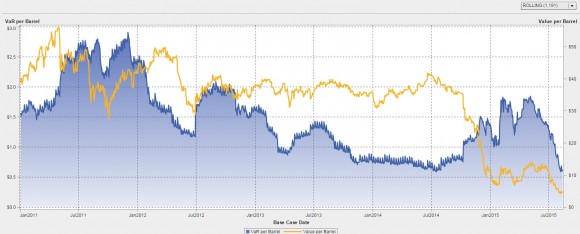SAS Voices
News and views from the people who make SAS a great place to work
Since our last VirtualOil update in May, oil prices have continued to take a beating. As the chart of the rolling five-year portfolio shows, much of our strip of options is now out-of-the-money and the average value per barrel of that optionality has sunk below $7. No surprise then that

with Natalie Osborn, Senior Industry Consultant, Hospitality and Gaming Practice, SAS. It’s back to school time, and back to school reminds me of getting back to the basics. So, we thought we’d start the fall with a “back to the basics” refresher series on analytics. To accomplish this, Natalie and

This is my final entry in the Education Meets Big Data blog series. Let’s review what we've covered so far… In my first post, I explained that statewide longitudinal data systems (SLDSs) track student data from preschool through college and workforce across the state. SLDSs can be used to see one

Big Data has become a technology buzzword. But how is Big Data changing insurance? Historically, insurance companies have used SMALL data to make BIG decisions. Today, insurers are using BIG data for SMALL decisions. What does this mean? Traditionally, insurance companies have aggregated data to group risks into broad categories
When I ask people what they know about Denmark they often mention Hans Christian Andersen. He was born in Denmark in 1805 and is one of the most adored children’s authors of all time. Many of his fairy tales are known worldwide as they have been translated into more than

Will the Internet of Things (IoT) create a web of connected devices that make our lives better or an infinite infestation of annoying devices invading our privacy for no good reason? I don't know. I do know that the answer is going to depend less on the technology and more





